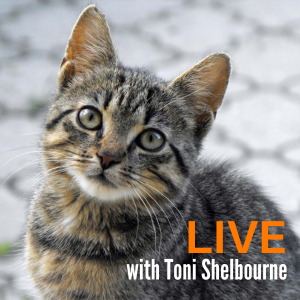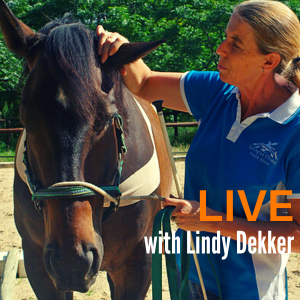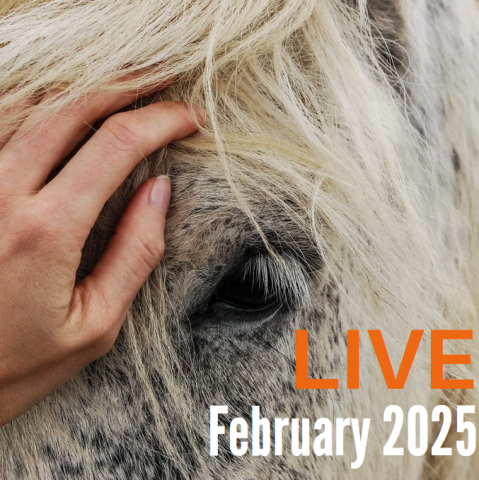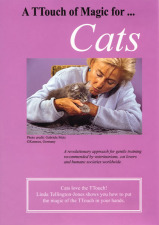Search Results
Your search for WhatTTouch returned 16 categories and 75 items
Items
About Us > Our Teachers > Meet Our Instructors
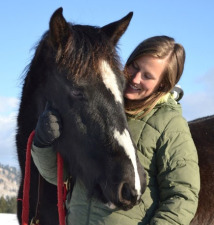
Mandy Pretty
Born and raised with horses, Mandy was literally riding before she could walk. Her exposure to the horse world was somewhat unconventional. Daughter of clinician Robyn Hood, and niece of Internationally renowned horse woman Linda Tellington-Jones, meant that her norm for handling and interacting with horses was several decades ahead of its time. Long before equine chiropractors, massage therapists and acupuncturists were main stream, Mandy and her family were looking for tangible physical and emotional reasons for unwanted behavior. They began phasing out black and white behavioral labels like “stubborn,” “lazy” and “disrespectful.” In Mandy's family, horse behavior was viewed as reaction to a concrete catalyst, requiring looking at balance, pain, fear, fear of pain and issues of rider communication.
At the age of 4 and a half, on the way to her first Advanced TTEAM® (now Tellington TTouch®) Training in Boulder, Colorado, Mandy first met Peggy Cummings, the founder of Connected Riding.
For over a decade Mandy was schooled in Centered Riding and influenced by top Icelandic riders and clinicians. She was immersed in the world of horses, helping to start youngsters, exercise sales horses as well as participating in demonstrations and competitions with some of her parents' Icelandic horses.
Then, at age 17 Mandy met Peggy Cummings again. Although initially skeptical of Peggy's Connected Riding® concepts, Mandy soon understood the influence of posture and its effect on the horse underneath. The proof was in the pudding as it were, and she was soon a “convert” to Connected Riding®. Peggy became Mandy's mentor and riding coach, expanding her knowledge of equine/rider bio-mechanics and ideal function under saddle with Connected Riding.
Mandy trains and teaches all breeds and disciplines full time; incorporating the Tellington TTouch® Method-Connect to train young horses and re-school older horses alike. In addition to training at Icelandic Horse Farm, Mandy travels to teach clinics featuring the Tellington TTouch® Method and Connected Riding. Mandy has taught independently in Mexico, Australia, the US and several Canadian provinces as well as assisting Robyn throughout Europe, South Africa, Australia and North America.
Mandy creates a positive experience for horse and rider; improving performance without compromising physical, emotional or mental well being. Her clinics easily apply to an all breed format although often geared toward the Icelandic Horse. Mandy teaches one to five-day workshops throughout the year, offering several at The Icelandic Horse Farm. She is available for demonstrations, riding lessons, lectures and clinics.
Mandy is a Tellington TTouch® Equine Instructor and a Certified Connected Riding Practitioner. She lives near Vernon, BC down the road from Robyn and Phil (aka Grandma & Grandpa) with her husband Walt and two young sons on their "Faux Farm." Visit her own website: www.intouchwithyourhorse.com.
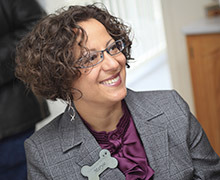
Maryse Perreault
As long as she can remember, Maryse, was always fascinated by the oneness of life and nature. As a child, following her father’s teachings, she would wander in silence in the forest, in a sort of meditative state, ‘’listening to the sound of life’’ as her father and grandfather would say. She became fascinated by interspecies bonds and relationships, including the human and companion animal bond.
What always piqued her interest was trying to understand the other and trying to establish a bond of trust without using words. As a result of this, she would unexpectedly find herself being touched by vivid emotions forming relationships that are sometimes so simple and sometimes very complex.
Later, two events brought TTouch on her path. Her dog was diagnosed with Addison’s disease, and she met with Lucie Leclerc, who was then a TTouch practitioner and assistant. These life events gave her the curiosity and interest to learn more about TTouch and it ended up completely changing her life path and career goals.
She continued her TTouch training until she became a TTouch practitioner. Up until this point, she had received her degrees in Geology and Communication but was also working, in her spare time, as a dog trainer using positive reinforcement and as an animal-assisted activities practitioner and teacher.
From then on, she dedicated her life to teaching TTouch to numerous groups of people with different backgrounds within the animal field like groomers, shelter employees, dog trainers, and animal-assisted activities practitioners, for example. She was also an active mentor to both French and English-speaking students.
She wrote articles in French for blogs, also translating numerous documents and training, and teaching online classes as well.
In her desire to better understand the TTouch method and develop her self-awareness abilities, she went on to explore the world of somatic education. She amongst other methods, explored Tai Chi, Qi Gong, Karate, the Feldenkrais Method… She ended up earning a degree in the field and now also teaches voice guided somatic work inspired by Moshe Feldenkrais in Québec, Canada.
That work, along with the TTouch work, influenced and changed the way she teaches animal-assisted activities/therapy work. She has worked with dogs, rabbits and other small animals from shelters and helping them manage their stress, anxiety and nervousness has been a growing passion from the very beginning.
As a companion animal Tellington TTouch instructor, Maryse, sees again and again how animals, like humans, possess the resources that allow them to express their full potential and their relational skills.
She is proud to partake in the changes humans are putting forward in order to collaborate and to create authentic, supportive, and respectful alliances with their pets.
For more information about Maryse, visit her website www.essenceetalliances.com or contact her directly at ttouchquebec@gmail.com.
About Us > Research & Studies
Horse 1999 EPM. Neurological Study
Tellington TTouch® as a Complement in the Rehabilitation of Horses with EPM and Neurological Deficits
The manual has been given to several veterinarians for the use of their clients and has been found very effective. Additional study and documentation required.
A study of the rehabilitation of horses with neurological deficits, using TTEAM, started through the efforts of Dr. Mark Meddleton and his wife, Becky. Becky's horse, Jewel, was severely affected by Equine Protozoal Myeloencephalitis (EPM) and Dr. Mark was trying all the forms of experimental medication. During the times that the medication seemed to be working, Becky decided to try TTEAM to rehabilitate Jewel. Becky applied her basic knowledge of TTEAM and was impressed by what she was observing with Jewel.
Becky and Mark came to a TTEAM workshop at Galisteo Creek Farms in April, 1999 to learn more and to talk with Linda to see if TTEAM would cooperate in a study of rehabilitating horses with EPM. Becky explained to the group that initially she had thought that only the ground exercises would help, but after talking with TTEAM Instructor Carol A. Lang, she tried the TTouch and realized it too was a key element.
To initiate the study, Linda and Carol met with Dr. Mark and Becky at a client's farm. A neurological exam was performed by Dr. Mark on three horses. TTEAM techniques were shown the horse's owner and Dr. Mark set up a basic schedule of rehabilitation with instructions the owner was to follow. In a few weeks, Carol met with Dr. Mark and Becky at this client's farm. Dr. Mark reexamined the horses and both he and the owner agreed that improvement had been made. Carol taught the owner more TTEAM techniques and Dr. Mark scheduled another evaluation of the horses.
In June of 1999, Dr. Mark, Becky and Carol worked with Jewel and Mark's horse, Dugan, who also had been diagnosed with EPM. Dr. Mark did a neurological exam of each horse. Then, as they did TTEAM and TTouch® with both horses, Dr. Mark, Becky and Carol discussed which techniques were working, the timing of the sessions, the sequence of TTouch® and the work in the TTEAM Confidence Course. They also made a first draft of a checklist for the owners to keep track of their horses rehabilitation program.
Carol accompanied Dr. Mark and Becky on visits to at least three clients who had horses with neurological difficulties. Each owner was shown TTEAM techniques and Becky recommended the rehabilitative process. Dr. Mark's scheduled follow-up neurological checks in order to track progress. Becky reported that the percentage of improvement of the trial horses was very high and that the owners were very satisfied with the results.
To continue the development of a protocol that Dr. Mark planned to present to the AVMA, Carol met with Dr. Mark and Becky and TTEAM Practitioner, Kirsten Henry several times over the next year. They filmed a video demonstrating how to do TTEAM techniques specifically for rehabilitation of horses with neurological deficits and developed a modified Confidence Course.
They did many trials with TTEAM techniques, in particular the use of wand and lead, the TTEAM body wrap and TTouches.
Carol prepared a booklet of TTEAM techniques to be distributed to participants of the study. Dr. Meddleton reviewed this booklet and made suggestions from his perspective as a veterinarian.
Hoping to receive a grant, Dr. Mark presented this protocol to a veterinary conference in the fall of 2000. The evaluation and advice offered about their study gave Dr. Mark and Becky new insights and direction. However, Dr. Mark's veterinarian practice was expanding so much that their time for continuing this study was curtailed.
In March, 2002 Dr. Mark reported to Carol that he could not proceed with the study of a protocol for EPM/neurologically impaired horses. He offered to share his and Becky's work with any veterinarian that Linda might find who would be interested in continuing.
We know that TTEAM has been very effective in helping horses rehabilitate from neurological deficits. We offer this booklet as a guide to TTEAM Practitioners and others who will use TTEAM and TTouch to facilitate their horses' rehabilitation.
Carol A, Lang, TTouch Instructor
Santa Fe, New Mexico
Purchase the Booklet in our Shop.
NOTE: TTEAM is an acronym of "Tellington TTouch® Equine Awareness Method." Since this article was written, the brand name for all the facets of the TTouch® organization is Tellington TTouch®.
Events
Interactive & Online Getting in TTouch® with Your Cat
Dates: Sundays – February 2nd & 23rd, 2025
Time: 16:00 – 18:00 GMT/ 11:00 – 13:00 EST – via Interactive Zoom Sessions (recorded for repeated viewing)
The Live Interactive portion of the course includes:
- 4 hours of live learning sessions in a small, friendly group setting.
- Access to an exclusive Facebook Group for ongoing questions and feedback
- Recorded sessions for future viewing
- Individualized advice and coaching about your specific cat.
- Private Whatsapp group.
The online portion of the course includes:
- 3 Lessons: Each consisting of several specific topics.
- Over an hour of “how-to” videos and lectures about each specific concept and exercise
- Downloadable 40 page Course Manual
- 24/7 access to all materials
Academy Credits: 4
On February 2nd & 23rd, 2025 (16.00 – 18.00 GMT/ 11:00 – 13:00 EST) join Toni Shelbourne, Tellington TTouch Instructor, author and Animal Behaviourist, takes you through the steps to begin understanding and interacting with your cat in a more positive, mindful, and proactive way.
Learn how to notice subtle changes and communication signals that you cat is trying to convey to you and understand how you can adjust and adapt your approach to each individual animal. This course includes 4 hours of live, interactive, virtual learning AS WELL AS, online course material, available to you 24/7 with lifetime access.
Taking what you observe, discover the versatile and adaptive TTouch body work techniques that allow you to make positive contact with your cat, in a way they enjoy and look forward to; deepening your bond and helping your feline friend become more comfortable and relaxed.
In addition to simple yet effective TTouch techniques, discover fun, interactive exercises that will engage your cat and help transform apprehension or indifference into curiousity and engagement.
Use your new skills in practical applications, learning how to help your cat become more comfortable in typically challenging everyday handling scenarios such as, Vet visits, nail trimming, and more!
View Details and Register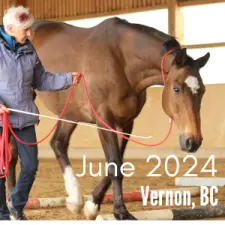
Hands On - Tellington TTouch® for Horses
Are you seeking news way of understanding or working with horses?
Would you like to learn low-stress, effective, safe and innovative techniques and exercises that can be integrated into what you already know and do?
Do you want to enhance the relationship you have with your horse?
Discover how the Tellington TTouch Method will improve performance, well-being, and behavior while enhancing the relationship with your horse on the ground and in the saddle.
This intensive hands-on course will give the tools of observation, bodywork, groundwork, and an introduction to riding concepts that will help you understand and communicate with every horse you work with.
In addition to Tellington TTouch principles we will be exploring the use of Wendy Murdoch’s “Surefoot Equine Stability Program” with a variety of Surefoot Pads and touch on Peggy Cummings’ Connected Riding concepts for body-awareness exercises that can be taken into everyday life, in and out of the saddle.
Enjoy the positive, fun filled learning environment that helps you understand and connect with horses in an all encompassing, whole, way. This workshop can serve as an introduction to the Tellington TTouch Method for Horses or as a way to build and refine the skills of more experienced students.
Choose from 2 different course options:
3 day introductory option for students new to the work and looking to add some tools to their everyday handling
5 day intensive option for students looking to deepen their understanding and refine their skills. The 2 extra days can be tailored to individual interests and learning needs.
Can count to credit for Tellington TTouch Practitioner credits suitable for new and returning students
Tuition (2 Options)
3-Day: $755 plus 5% GST (8 credits)
EARLY BIRD (Ends December 31, 2023) $650 plus 5% GST
5-Day: $1175 plus 5% GST (12 credits)
EARLY BIRD (Ends December 31, 2023) $950 plus 5% GST
Included in tuition is access to our Online Course – “Tellington TTouch for Horses – An Introduction”. $49.94 USD VALUE
Snacks, lunches and refreshments are included.
Learn more about the Facility and Accommodations.
For cancellations made more than 30 days in advance of the training, a refund will be given minus a $100 administration fee. No refunds are possible for cancellations less than 30 days prior to the start of the training, unless we can fill your spot. In some cases credit can go towards subsequent events.
We recommend that you purchase flight and hotel insurance for each event for which you register.
All prices are quoted in Canadian Dollars
ttouch.ca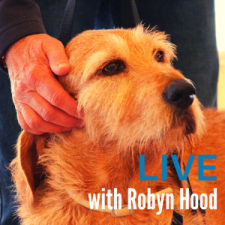
Interactive & Online Tellington TTouch for Dogs

– Are you a dog lover?
– DO you want to develop positive, effective, techniques to enhance relaxation and support well-being?
– Have you recently added a rescue or shelter animal to your family?
– Do you have a dog who needs a little extra support or has some specific challenges?
– Are you a Canine Body worker or wellness professional looking to add integrative techniques to your skills?
Join Robyn Hood (Senior Tellington TTouch Instructor), virtually, and learn trust-based, gentle, effective and supportive techniques from the comfort of home. This includes 10 hours of live, virtual, group instruction and life-time access to a self-paced online study course.
The Tellington TTouch Method is a gentle, hands-on approach that improves well-being, behaviour, cooperation and the relationship people have with animals. It includes the use of a specialized form of bodywork, specific types of equipment and creative movement exercises that are easy to learn and used with all types of animals.
Most importantly, the Tellington TTouch Method facilitates trust and enhanced communication between humans and animals. TTouch can be integrated into daily life to increase confidence, reduce stress, improve focus and enhance well-being, making TTouch perfect for busy people!
These techniques are easy to learn and provide many solutions to common concerns by recognizing each animal and person as unique individuals. Rather than a set protocol for particular issues, the Tellington TTouch Method offers creative solutions customized to each situation.
This module encompasses the “Bodywork” component of the Tellington TTouch Method, one part of the whole. This introductory module is a wonderful addition to anyone interested in canine bodywork, enhancing their relationship with their animals, those who practice canine massage, or dog guardians with senior animals looking to help enhance well-being and function.
Not sure what the time will be where you are? Check it out on our Time Zone Converter.
You will learn how to:
➔ Interpret your dog’s behavior in a non-judgmental way
➔ Notice a dog’s subtle body language for signs of stress or relaxation
➔ Use simple, relaxing body work techniques to support your dog and your relationship
➔ Support your dog with techniques to reduce anxiety and enhance self-confidence
➔ Utilize simple TTouch Body Wrap techniques in appropriate situations
➔ Recognize and acknowledge how your own state of mind will affect your dog
This workshop includes:
10 hours of LIVE, interactive instruction via Zoom
Instant, life-time access to the online course, “Tellington TTouch for Dogs: Bodywork Module” for solid foundation of knowledge and accessible review opportunities.
Supportive Study Group Access
Recorded sessions for review.
Online Course with 24/7, lifetime access.
*This course counts as 8 Academy credits towards becoming a Certified Tellington TTouch Practitioner. No prior experience with the Tellington TTouch is required.
Register and gain instant access to an extensive, clearly laid out and detailed online course. This course can be done at YOUR OWN PACE, before or after the LIVE sessions.
The class is small and allows for individualized advice and attention.
The online portion of the course includes:
8 Lesson Modules: Each consisting of several specific topics.
Over 24 “how-to” videos and lectures about each specific concept and exercise
Easy to follow mind maps
24/7 – lifetime access to all materials
Online Course Outline:
➡️ Welcome to the Course
➡️ About the Method
- Goals & Overview
- Components
➡️ Attitude & Philosophy
- Core Principles
- Staying Grounded
- The Power of Pause
➡️ Observation & Awareness
- What to Look For
- The 5 Fs
- How to Observe
➡️ The Sensory Side of TTouch: How TTouch Affects the Nervous System
➡️ Basics of Bodywork
- Understanding & Refining the TTouches
- TTouch Techniques: Part 1
- TTouch Techniques: Part 2
- TTouch Techniques: Part 3
- TTouch Techniques: Part 4
- TTouch Techniques: Extremities
➡️ All Wrapped Up: TTouch Body Wraps
- Quarter & Half Wraps
- Head Wraps
➡️ The Next Steps
ttouch.ca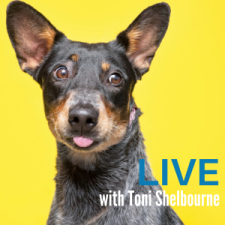
Interactive & Online: Anxious Dogs – Understanding and Managing Anxiety
Beginning on October 6th, join Tellington TTouch Instructor, Animal Behaviourist and Author, Toni Shelbourne as she helps you unlock the keys to understanding and supporting your anxious dog.
We all want a calm, confident canine companion. Consistent training, an enriched , low-stress lifestyle, adequate exercise and a good diet all contribute to helping our dogs feel their best; but what do you do when you come across a dog who still struggles with anxiety? As with people, anxiety is a complex issue that cannot necessarily be helped with a “one sized fits all approach” or simply additional training or exercise. This course is designed to help TTouch Practitioners and practitioners in training, rescue workers, dog owners and canine professionals gain a comprehensive understanding of anxiety in dogs.
You will acquire practical techniques in the Tellington TTouch Training method to support and manage anxious dogs. This course combines theoretical knowledge with practical strategies to empower participants in providing a nurturing and anxiety-free environment for their own canine companions, dogs in their care or clients dogs.
During the two, 2 hour live-stream sessions, Toni will guide you through the steps of understanding and then addressing your dog’s anxiety in a gentle, supportive and integrative way. These sessions are recorded for future viewing and you have lifetime access to all content.
This course include hours of informative, helpful lectures as well as easy to follow videos demonstrating specific techniques.
Course Outline:
What is anxiety.
Canine Communication.
Safe dog handling.
Working with the over-aroused anxious dog.
Working with the catatonic or shy dog.
What can we add to enhance our work.
What you will learn!
- Gain a comprehensive understanding of dog anxiety and its various forms.
- Learn practical strategies to reduce anxiety and create a calm environment.
- Develop skills in confidence building and calmness in dogs.
- Discover additional support options and interventions for severe cases.
- Promote the overall well-being and happiness of yours or your client’s dog.
Note: While this course provides valuable insights and techniques, it’s essential to consult with a veterinarian or professional dog behaviourist for personalized guidance in managing your dog’s anxiety.
Course Instructor:
Tellington TTouch Companion Animal Instructor Toni Shelbourne brings a wealth of experience with many different species and modalities. Toni is also an Accredited Animal Behaviourist based in the UK and has the following qualifications.
- Diploma in Canine Behaviour (ISCP Dip.Canine.Prac.)
- Tellington TTouch Instructor
- Real Dog Yoga Instructor
- Full Member of INTODogs
- Full Member of the International Companion Animal Network (ICAN)
- Senior Instructor for Dog Training College
- Author
- Over three decades of experience working with animals
Tellington TTouch® for You & Your Horse
$279.00
Live Interactive Sessions with Lindy Dekker
Dates: Saturdays – April 13th, 20th, 27th & May 4th
Time: 9:00 – 11:30 SAST (17:00 – 19:30 – AEST;15:00 – 17:30 AWST;18:00 – 20:30 – NZST; 09:00 – 11:30 – CET) (taking into account the changes to Daylight savings in the different countries) via Interactive Zoom Sessions
Certification Credits: 8
Between the sessions you will take what you have learned and practice it with your own horses. Take video for specific feedback to share in the next class so you can refine and improve your technique. (Live sessions are recorded in case you cannot make the live time)
LIVE ZOOM sessions for further guidance and discussion of course material. Between the sessions you will take what you have learned and practice it with your own horses. Take video for specific feedback to share in the next class so you can refine and improve your technique.
Details and Registration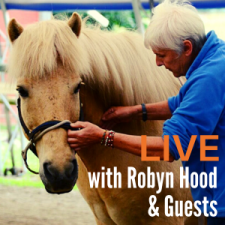
Interactive & Online Tellington TTouch® for Horses

Join Tellington TTouch Method Instructor, Robyn Hood, as well as other guest instructors, and develop a deep level of understanding and skill that will transform how you understand, handle and train horses.
Enjoy the logical, linear, learning of online learning along with the inspiring and adaptive format that includes 36 hours of small, LIVE, Zoom sessions – all recorded for your convenience and on-going learning.
This course is the ideal option for anyone seeking an integrative and compassionate approach to horse training and management. Whether you are a professional horse trainer or dedicated horse lover, this course will provide you with an incredible framework of philosophical understanding, observational skills, bodywork techniques, groundwork exercises, innovative tools, and work under saddle that can make what you already do well, be even better; all while developing a deeper, more trusting relationship.
The Tellington TTouch for Horses: Immersion Series can serve as your core curriculum for Tellington TTouch Online Academy Certification credits however it is also a fantastic learning opportunity for those wanting to add to what they already do well or expand their knowledge and skill set.
Register and gain access to an extensive, clearly laid out and detailed online course covering the material you would learn in at least two, 5 day hands on sessions. This course can be done at YOUR OWN PACE, before or after the LIVE sessions.
Beginning in March enjoy, the first of twelve, 3 hour immersion session that will leave you inspired, empowered and excited to learn and practice.
Between sessions you will work on specific skills and assignments, if you are working towards Certification. Sessions are recorded for future viewing or should you have to miss a live class. Each session will be taught by Robyn or another one of our wonderful TTouch Instructors.
Enjoy the comforts of home, with your animal at ease, in this small, intimate group setting. Robyn will help coach you through specific concerns you may have and give you the tools to enhance your horse’s well being, behavior and performance.
This course can count towards the Tellington TTouch Practitioner certification program for horses. It is also suitable for riders and horse enthusiasts who are interested in the method to enhance their relationship and address a myriad of challenges without force or dominance. All levels of experience and areas of interest are welcome.
Students will have access to online material to cover at their own pace. The online portion of learning consists of a logical, linear, “Tellington TTouch for Horsess – Core Curriuculum”, which can be accessed at any time.
The online portion of the course includes:
- The FULL Tellington TTouch for Horses Core Curriculum Course: Each consisting of several specific topics and lessons.
- Hours “how-to” videos and lectures about each specific concept and exercise
- Lesson video assignments, to be completed by those pursuing certification
- 24/7 access to all materials
The LIVE interactive portion of the course includes:
- TWELVE 3 hour sessions of learning in an intimate, supportive, group setting over the span of 6 months
- Class recordings for future viewing & review
- Access to an interactive group chat and discussion page.
- Expert feedback about your own animals
- In class assistants co-teaching and supporting the group’s learning and questions.
Payment plan available, please email ttouch@shaw.ca for information.
ttouch.ca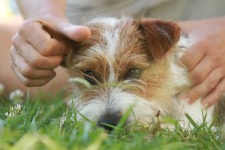
Tellington TTouch® Training for Dogs
This Workshop is Full. If you'd like to be added to the waiting list, contact us here
Three-day Workshop: May 9-11th, 2025
Instructor: Linda Tellington-Jones
Schedule:
Day 1: 10:00 AM - 5:00 PM (Arrive by 9:45 AM to get settled)
Day 2: 9:00 AM - 5:00 PM
Day 3: 9:00 AM - 3:00 PM
Tuition: $595
Deposit: $300 due at registration to hold your spot. Balance due by April 11th, 2025.
Early-bird Discount: Pay in full by March 28th to receive $55 off.
Please note: If you pay your deposit with a credit card, any remaining balance will be charged to the same card 30 days before the start of the workshop unless you have paid in full or informed us of a different payment method.
Three Ways to Register:
Online: Register Below
Phone: Call our office to pay with Visa, MasterCard, American Express, or Discover.
PayPal: Send payment to forum@tellingtontraining.com.
Cancellation Policy:
Organizer Cancellation: If the session is canceled due to unforeseen circumstances or insufficient enrollment, all payments will be refunded.
Participant Cancellation: Cancellations made more than 30 days before the workshop will receive a refund minus a $100 administrative fee. No refunds for cancellations made within 30 days of the workshop, but funds can be applied to another training within one year of the cancellation date.
Animals Attending the Training: Dogs and other companion animals are welcome. Notify us when you register as there is a limit on the number of dogs. Complete and submit an Animal Profile Form one month before the workshop.
If bringing your dog:
Only one dog may participate per day due to space constraints.
Bring a crate, x-pen, or mat, water bowl, food & treats, proof of vaccinations or titer, an ID collar, lead, and any head halter or harness.
Guidelines to help us maintain good relations with our training facilities and partner hotels by:
- Respect facility and hotel animal policies.
- Safely contain your animal when unsupervised.
- Leave facilities and hotel rooms in their original condition.
What to Wear: Comfortable clothing suitable for bending, stretching, and sitting on the floor.
Meals: Meals are not included. Bring your own lunch and snacks. Water, coffee, and tea will be available. There will be a one-hour lunch break each day.
Travel Information:
Airports:
Washington Dulles International Airport (IAD) - 36 miles
Baltimore Washington International Airport (BWI) - 58 miles
Ronald Reagan Washington National Airport (DCA) - 52 miles
We recommend that you purchase trip insurance for your flight, hotel, etc.
Accommodation: For nearby hotels, visit Hotels.com or check Airbnb.com or VRBO.com.
Additional Information: Frederick, MD, is only 15 minutes away, offering dining, arts, shops, and entertainment. Enjoy outdoor activities like rock climbing, canoeing, and mountain biking. Washington D.C. and Baltimore are about a 50-minute drive from the training site.
For more information about Fox Haven Farm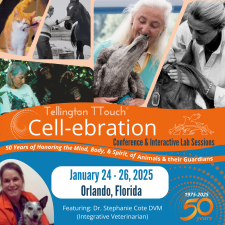
CELLebration Learning 3-Day Conference & Interactive Workshops
Celebrating 50 Years of the Tellington TTouch Method in 2025!
In 1975, Linda Tellington-Jones introduced a groundbreaking approach to influencing behavior, performance, and wellbeing in animals with the Tellington TTouch Method. In 2025 we are thrilled to celebrate 50 years of this revolutionary work!
Even though our October 2024 in-person "Cell-ebration" event was disrupted by hurricane Milton, we’re excited to transform this challenge into an opportunity:
The 2025 Tellington TTouch “Cell-ebration” Learning Conference & Interactive Workshop Sessions have been reimagined, revitalized, and ready to inspire with a completely new format!
This exciting in-person event brings together a community of passionate animal lovers for a blend of learning, sharing, hands-on practice, break out sessions, and meaningful connections.
Mornings will feature engaging lectures, including an inspiring keynote from Dr. Stephanie Cote, DVM, who integrates TTouch, Cranial Sacral Therapy, and other holistic techniques in her veterinary practice.
Afternoons will be dedicated to interactive workshop labs, where you can apply new techniques, refine existing skills, and receive personalized feedback.
Event Details:
Location: Crowne Plaza Hotel
304 West Colonial Drive
Orlando FL 32801
888-295-7563
Dates: January 24-26, 2025, Conference & Banquet
Schedule:
CELL-ebration: Friday January 24th
9:00 - 12:30 Presentations
12:30 – 2:00 Lunch at the Hotel included in tuition.
2:00 - 5:00 Interactive workshops
CELL-ebration: Saturday January 25th:
9:00 - 12:30 Presentations
12:30 – 2:00 Lunch at the Hotel included in tuition.
2:00 - 5:00 Interactive workshops
6:30-8:00 Banquet dinner (not included in tuition)
CELL-ebration: Sunday January 26th:
9:00 - 12:30 Presentations
12:30 – 2:00 Lunch at the Hotel included in tuition.
2:00 - 5:00 Interactive workshops
Note: Program details subject to change.
Fans of TTouch who are not Practitioners or have not taken any trainings, are welcome to attend the full conference.
Event Highlights
Presentations:
- TTouch & Proprioception for Dogs & Horses – Rachel Jackson
- TTouch in Rehabilitation – Karin Freiling
- Experiencing Flower Essences, Acupressure and TTouch with applied Kinesiology – Kathleen Aspenns
- TTouch Success Stories: Extreme Physical Deficits – Sanju Ramachandran
- How TTouch brings light to the cells as a form of healing communication / theory and practice – Elinor Silverstein
- TTouch Behavior Insights for Cats – Toni Shelbourne
Interactive Workshops:
- Refining & Expanding TTouch Skills with Linda Tellington-Jones
- Fascial Integration & Body Wraps with Robyn Hood
- TTouch & Cranial Sacral Therapy with Stephanie Cote & Sally Morgan
- Advanced Concepts for Dogs & Horses with Robyn Hood
- Feldenkrais Awareness Through Movement (ATM) Session
- Round Table Discussions on successes, challenges, and strategies
Participants will be grouped by experience level, creating a dynamic learning environment for both beginners and seasoned practitioners.
Join us for this extraordinary gathering as we "Cell-ebrate" 50 years of changing lives, one TTouch at a time, while honoring Linda Tellington-Jones and our dedicated teachers worldwide.
Note: Program details subject to change.
Incentive:
Bring a friend to our in-person conference (who was not previously registered to attend) you will receive an incredible bonus – of a 30-minute consultation, via Zoom, with Linda Tellington-Jones herself ($200 value)!
Payment options.
Fees: $595 if paid in full when you register
or
you can opt to pay in installments of 3 payments of $211 each (a total of $633), 1st payment due at time of registration, 2nd payment on December 6th and 3rd payment on January 3rd (the last 2 payments will be charged automatically on those days unless you contact our office with different instructions)
Tuition includes the conference and lunches. It does NOT include the Saturday evening banquet dinner.
Special Registration Fees for the CELLebration:
• Daily attendance: $245 per day (includes lunch).
• Banquet: $85 (3 course meal plus coffee and tea)
How to Register
- Below – scroll to the bottom to register and to make a payment.
- Call our office to pay with your Visa, MasterCard, American Express, or Discover card
Cancellation Policy:
Tellington TTouch Training reserves the right to cancel the CELL-ebration and trainings if necessary, because of circumstances beyond our control. In this case all deposits, tuitions and the processing fees will be refunded.
We recommend that you purchase trip insurance for your flight, hotel, etc.
Participant Cancellation Policy:
Any cancellation made more than 45 days before the start of the event will incur a $150 administrative cancellation fee. The remaining amount you have paid will be refunded to you.
For any cancellations made within the 45-day window before the event begins, whatever monies you have paid are nonrefundable, unless you are able to find a substitute participant to take your place.
Lodging
Tellington TTouch has reserved a block of rooms at the Crown Plaza Hotel at the following group room rates (The room block is under Tellington TTouch Training):
$149 plus tax in a Two Queen or King Bedroom
(Two Double Queen Beds or a King Bed with a comfortable sitting area, 48” flat screen, and workspace. A wet bar, mini refrigerator, Keurig coffee maker and full-size microwave adorns the kitchenette area. This suite sleeps 2 to 4)
Group rates include the following for overnight guests:
- Free Wireless Internet Access in all rooms
- Outdoor Pool and Hot Tub daily open from 7 AM – 11 PM
- On-Site Self-Parking – Reduced rate of $10 + tax per day
- 24-Hour Fitness Center
- 24-Hour Business Center
- Bite Bistro & Wine Bar 7 AM – 10 PM
- EV- car charging station on site
- Service Animals are accepted – no other animals allowed
- Free Hotel shuttle within 3 miles of the hotel (closest Grocery store less then 1 mile away -Publix)
Method of Reservations:
Individual reservations can be made online:
Tellington TTouch Training Reservation Link
If you need assistance, you can call Central Reservations: 888-295-7563.
(For International callers use: 407-843-8700)
Please refer to Group Reservation: Tellington TTouch Training
Check In Time: 3:00 PM Check Out Time: 11:00 AM
Please note: Reservations by attendees must be received on or before Monday, December 23rd, 2024 (the “Cutoff Date” for our room block). Reservations received after the Cutoff Date will be confirmed on a space-available basis at prevailing rates.
Please view additional Amenities at the hotel:
www.ihg.com/crowneplaza/hotels/us/en/orlando/mcooa/hoteldetail/amenities
Airports: Orlando International Airport (MCO) about 13 miles to the hotel
Shuttle: We have not been able to locate any airport shuttle but there are Uber, Lyft and Taxies. Please research your preferred option.
Things You Should Know About Orlando
Orlando is one of the most popular travel destinations in the United States.
Some interesting websites:
www.visitorlando.com
worldstrides.com/blog/2017/07/10-fun-facts-orlando/
theculturetrip.com/north-america/usa/florida/articles/15-things-to-know-before-visiting-orlando-florida
Weather:
The average weather in Orlando, Florida at the end of January is mild and comfortable, with temperatures ranging from the 40s to 70s°F
Tellington TTouch® for You & Your Horse
Live Interactive Sessions for you & your horse
Dates: Saturdays – February 1, 8th, 15th & 22nd.
Time: 9:00am – 11:30am (PST) or 17:00 – 19:30 (GMT)
Cost: $249.00
Certification Credits: 8
Between the sessions you will take what you have learned and practice it with your own horses. Take video for specific feedback to share in the next class so you can refine and improve your technique. (Live sessions are recorded in case you cannot make the live time)
LIVE ZOOM sessions for further guidance and discussion of course material. Between the sessions you will take what you have learned and practice it with your own horses. Take video for specific feedback to share in the next class so you can refine and improve your technique.
Join us for a supportive, interactive learning experience that will give you the understanding and skills to start making a difference in your horse’s performance, balance, trust and well-being right away!
Enjoy the logical, linear, learning of Online Learning PLUS 10 hours of inspiring and interactive learning with 10 hours of ZOOM sessions, in 2.5 hour weekly sessions.
What You Will Learn
- This course guides you through several components of the Tellington TTouch Method for Horses.
- Discover the kind, empathetic, heart-centered, philosophy that is at the core of our approach.
- Understand how to “see your horse with new eyes” through non-judgmental, rational, methods of observation and understanding of behaviour.
- Learn the cornerstone of the Tellington Method, the TTouch Bodywork, simple, non-invasive and easy to learn equine bodywork that relieves tension, improves posture, increases awareness and enhances trust.
The online portion of the course includes:
- 8 Learning Lesson Modules each with a variety of focused topics
- Easy to follow mind maps and “how-to” video
- 24/7 Instant access to all materials
The LIVE interactive portion of the course includes:
✳️ 10 hours of LIVE, virtual learning in an intimate, supportive, group
✳️ Personalized coaching for your and your horse’s specific goals or challenges
✳️ A dedicated WhatsApp group for all participants for any mid week queries or discussion
✳️ Private Facebook page where the recordings of the zoom sessions will be uploaded.
Full Details and Registration
Our Method for > Dogs > Success Stories
Animal Control Officer
"I was given a scholarship, and was therefore able to attend a seminar with TTouch Instructor Debby Potts. It was wonderful!
"I am an animal control officer in Southern Illinois, and through this class I learned many things to help me in the field. Up to this point, and learning about calming signals, I thought the wide gaping yawn simply meant "you have five minutes 'til I throw up in your lap."
"I wanted to let you know how I have used what I have learned. Immediately upon returning, I had to remove a young dog with a litter of newborn pups from under a shed. The homeowner was not aware the dog was there until she charged out from under the shed and tried to bite her. Taking a position several feet from her and making myself as small as possible, I started offering some of the calming signals. Within 15 minutes I was able to touch her on the nose, and after a few calming TTouches, was able to remove the pups and mother.
"I have used this approach many times. Also, of course this probably has no scientific backing, I have used the ace bandage, or sometimes blankets or whatever I have on hand, to wrap dogs having mild seizures. It seems that very soon after wrapping, and of course showing them that everything is still there and not flailing around, they recover very quickly.
"I would like to continue with the training when I can as there are so many aspects this type of training can assist in. Thank you so much for the opportunity." -Donna Hawk
Thank You!
Dear Linda, "thank you for your wonderful book that has helped me and moved me a lot. And of course, it did help our dog, who was very ill and died finally.
"During his illness, Iwan our dog, was coughing very badly. The animal doctor said that he could not help him. A girlfriend told me about your book and the TTouch® Method. I immediately started reading and practicing what I was reading. I began to TTouch®Iwan. From the beginning, I learned something very important: How far away I was from understanding his needs and problems. I had thought that I was sensible enough to know and to feel what was going on with him. But I was not really. I lost a kind of a silliness and proudness. I saw, I know nothing and that I created suffering, because I did not really understand the animal nature.
"I love animals and understand them to some extent, because from childhood on I was sitting silently for hours with cows, horses, sheep and dogs, being with them, trying to get in touch with them. From time to time in my life I felt a great longing to speak with animals, but I did not really know why this longing was so extremely strong. I felt a kind of separation between me and the animal creation, which hurt me.
"But I did not know what to do, accepted these feelings and forgot them again. But they woke up the time when our family's dog died slowly. I tried to help him as good as I could with the TTouch, and speaking with him. I began to realize many things that I had not been I aware of, for example the stress and the fear in his body and his loneliness. I saw the separation between me and my family members and Iwan. As I TTouched his body, I realized a connection that I never had been aware of. I felt a freedom of letting go of the artificial separation between me and the animal. And I saw how much I had contributed to the suffering of my dog, without wanting and knowing, only because of my ignorance.
"Iwan released a lot of stress from of his body, but he died finally, he was 13 years old and his heart and his lungs were full of water. Now I see, that we can prevent a lot of suffering and I am thankful that you open the eyes of lots of people to see, to touch, to learn to communicate and to cooperate. The TTouch® helped me to see clearer what I do and it helped my animal to release fear and stress. I wish I had known it earlier so that I could have tried to make the going of lwan easier. To use the time we still had together, to learn from him, what I had not learned before.
"At the end of my letter excuse the many mistakes in it, but writing in English is a bit difficult for me.
"The essence of my saying is THANK YOU!!! That is most important" MARIA ANNA HAUSHOFER Alte Muhle A-635i Scheffau
Our Method for > Horses > Success Stories
Older horses
"The TTEAM Newsletter is my “life line” to keep in touch with all the stuff you people get up to. Every now and again there is a surge of interest here in New Zealand, but for me it just keeps on getting better and better. Results mostly happen in minutes for me now, and people are amazed.
"I am always getting asked when I am going to compete my horse even though people cannot believe his age is 24 years old. Tellington Method had done so much for him. He had an accident 12 years ago that left him quite crippled and without the Tellington TTouch method, he would not be with me. He has taught me so much and given me some amazing experiences and may lovely rides.
"Thank you for sharing TTouch with me and many other people too. Animals, worldwide, love what the Tellington TTouch Method brings to them. And never let us forget the great job Robyn has done for so long bringing the written word to all of us TTouch people."
– Coral Boulton in New Zealand
"After seeing Instructor, Edie Jane Eaton’s demonstration, I have been using the Tellington TTouch exercises for two weeks and my l9 year old advanced dressage thoroughbred’s back is definitely more supple. And engagement is becoming elastic. He was stiff, and I have had problems getting him to use his hind-end to engage without getting stiffer in his back. No more!"
– Philippa Morrell in the UK
Prepare for Injections
"I wanted to use TTouch to make getting injections less a problem for my horses who got very upset during injections and then are very stiff after. I finally got my horses vaccinated. I appreciate your input. I started working on Bandit 25 minutes before the vet was to arrive. I concentrated on Bear Touches on his neck, and did ear, mouth, & tail TTouches. There was a squall coming in. The wind was howling and it was starting to rain. Bandit stayed completely calm while I was working on him.
"At the time, the vet was to arrive, we got a call saying she was called on emergency and would be here later. The weather continued to be terrible so I didn't get to work on him again before he got his shots. He was calm during the vaccinations and the vet commented that both of my horses were calmer.
"After the injections, I did Lying Leopard touches on Bandit's neck for about 10 minutes and later in the day, I did another five minutes. He had a very mild reaction compared to previous results. The next day he could lower his head to eat grass and did not seem "sick." His neck was somewhat stiff because he couldn't turn very far laterally, but was better the next day. I can't help thinking he would have done better if things had gone according to plan!
"I feel that the regular TTouch work I have been doing is having a calming effect on our two high strung Arabs. They have behaved better in situations where they previously have gotten pretty nervous."
- Marian Forbert
Our Method for > Other Animals > Success Stories
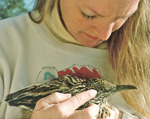
Bird
"I bought a medium Sulphur Crested Cockatoo six months ago who was a mess!! She was not tame or even the least bit friendly and had a few feathers missing. In six months, her feathers have filled in and though they are still not perfectly smooth I can now touch her and pet her and sometimes even pick her up. I decided to try the clouded leopard on her and WOW what a difference. I can now touch her everywhere, she even lifts her wings for me to touch her. She has even started coming to me every time I sit down, instead of when she feels like it. My stories are endless.
"I wish all people knew about TTouch®, please sent me all the information you can about becoming a practitioner, as I believe many could benefit from this work in my area.
"Thank you so very much." Cindy from Ontario, Canada
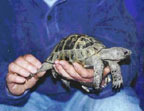
Turtle
"Myrtle the Turtle! It is surprising sometimes how we are introduced to animals who seem to choose the time and place. I was visiting a friend who has a wonderful outdoor pond full of fish, and a side area for turtles that her autistic son adopts - normally those in need of special care and friendship (another of the animal world wonders).
"Now, to continue my story, Myrtle was the largest of their painted turtles and attracted a hawk with her beautiful colors. The hawk swooped down and grabbed Myrtle in her talons. Myrtle was strong and obviously not ready to become dinner. By account, she seemingly struggled and bit the hawk, who immediately released her. She fell from a height equal to two two-story houses. At a glance there was something different. She had lost her left back leg and was in trauma from the fall. I just happened to visit on that afternoon.
"My first step was to check on her breathing and to stop the bleeding on the stump. Her breathing was ragged and was speeding and slowing, which, according to her owner was not normal for her. She showed no interest in eating or drinking and was not reacting to a stranger working with her. I began with the Lying Leopard on her shell as I did not want to overwhelm her by touching all of her shell. I left her for about five minutes to see what her reaction would be. She did not show any outward reaction, so I started the "Turtle TTouch" all over her shell, explaining to the owners, how it could calm Myrtle and stabilize her breathing and temperature. I also gave her Rescue Remedy.
"The bleeding on her leg had slowed significantly. (I had a Calendula homeopathic tincture and used it on her wound while working the TTouches). Her breathing became regular so we left her alone for about 1/2 an hour.
"She accepted small Raccoon touches on her other three legs, neck and tail. I soon was able to do VERY small Python lifts on her three legs and moved to where her other leg had been severed. It was hot to the touch, and I was particularly careful to be gentle with her, so the bleeding did not start again. For me, this was the first time I had worked on a phantom limb especially one so recent. It was phenomenal that once I began doing Noah's March at the end of the leg lifts - on all her legs - that she began to walk. And walk she did. It was almost as though she had been walking on three legs for ever! Her head and tail were out of her shell and she was interested in eating once again.
"At each step of the way, both my friend, and her son were interested in trying the TTouches on their other turtles. And they continued with Myrtle. The realization that she had recovered was a rare find a month or so later - turtle eggs!"
- Janice Fowles TTouch Practitioner-1 Ottawa, Ontario

Building Trust
By Missy Parker, Veterinary Nurse
"One of the most beneficial things I've seen in a long time for building trust and calming is the Tellington "TTouch" therapy system, developed by Linda Tellington-Jones.
"In my capacity as a Registered Veterinary Nurse, I have used TTouch to prevent dogs from going into shock (yes, it really does work!) until the vet could get there to help the dog. In my capacity as an obedience instructor, I have used portions of it in my greeting (and subsequent handling) behaviors with scared dogs (as well as with aggressive ones) to build up their trust in me while calming them in a class situation. I have also used portions of it when I'm wearing my "mom" and "wife" hats to "create an atmosphere more conducive to cooperation."
"I've never told the humans I've used it on that it was developed for animals.However, Baylor Hospital of Dallas, Texas (which is a teaching hospital) is now using it on their human patients - and telling them it was developed for animals - so maybe it's time for me to come out of the closet!
"I've seen TTouch work wonders in every case in which it has been used properly. Four particular cases come to mind. The first is a Shiba Inu who would "short-circuit" in my obedience classes when the stimulation level got at all elevated. With just five to ten minutes of TTouch from his owner before each class, the dog did so much better!
"The second: my client, a very competent middle-aged woman, had never owned a dog before she adopted a female GSD stray. My best guess as to this dog's story is that she was either from Schutzhund lines or a washout from a police dog program, then neglected severely for quite a while afterward. She had heartworms and callouses on every pressure point from, I believe, lying in a concrete-bottom kennel.
"Heidi (the dog) was the most accomplished kennel escape artist I've ever dealt with ... she escaped mine five different ways before I figured out how to keep her in - she had both removed the gate from its hinges and bitten the gate lock in half. I just love this dog because I have learned so much from her! When she first started coming to my classes, Heidi would roar in dragging Cathy (the owner) as though she were an embarrassing ball-and-chain to be completely ignored. Now, after a few months of class, TTouch, and good management, Cathy has a much nicer dog - who adores her. Like many other dogs I've seen on TTouch regularly, Heidi can be gently reversed when she goes into overdrive, and quickly, by the application of as little as two minutes of TTouch touches.
"The third: Silver is a toy poodle who was genetically predetermined to be a yappy, snappy, shaky mess. She is now a fabulous therapy dog, solid at CD-level obedience, a joy to her owner and to everyone else with whom she comes in contact. TTouch is used in Silver's daily life in general and, specifically, before and after therapy sessions with challenging clients. By the will of her owner, with a little help from me, this dog has gone from "sow's ear to silk purse." By the way, Silver has only 20% vision in one eye and about 40% in the other; she will eventually go totally blind.
"The fourth case is my husband, who has back trouble - the pain sometimes makes him very "crabby." TTouch helps him feel better and consequently elevates his mood, which has the effect of making everyone in my house feel better!
"In classes, I begin with the Tarantula/Plow techniques. Even “extreme” dogs seem to enjoy it so much and/or are so curious about what I'm doing that they momentarily interrupt their agenda to ... eat the people, eat the other dogs, die of fright, whatever. Then, when I have their interested attention, I move to Noah's March. If all's still well, I use the Lying Leopard. All of this is done while toning.
"Years ago, when I was in hard labor, a female Labor Attendant did it on me - and it worked then, too - although she had no idea that what she was doing would years later be called the TTouch. Her technique was a super light touch, Clouded Leopard all over my straining belly while she softly sang “Rock of Ages” to me! It was incredibly helpful at a very stressful and painful time.
"The effect of regular TTouch use seems to be cumulative if these techniques are used with a subject regularly, his or her body’s autonomic responses seem to take over faster and faster each subsequent time.
"So, from my experience, I heartily recommend TTouch as a great addition to your instructor’s toolbox...and thanks to Terry Ryan for the term!
"Next time you have a bad headache, try it on yourself - it works that way too!"
- Missy Parker thunderridgeinc@juno.com
Missy continued:
"Tellington TTouch was born out of Linda's extraordinary lifetime of work with horses, and has now been adapted to many species other than equine, including dogs, cats, hamsters, and many exotic animals. Linda's four years of study with Dr. Moshe Feldenkrais, originator of the Feldenkrais method for horses, led her to the development of TTouch.
"Although TTouch is not technically a type of massage therapy, that would start to describe it. Actually, massage is done with the intent of affecting the muscular system - the intent of TTouch is the reorganizing of the nervous system and activating the function of the cells. I can describe it best by saying that it is a way of laying your fingers gently on the skin and moving them, as well as the skin they are touching, in a circular fashion, making repeating one-and-a-quarter circles clockwise. During this touch, the practitioner breathes rhythmically - in for the first half of the slow circle and out for the second half.
"According to Linda Tellington-Jones, TTouch is so simple to learn that a person having had less than one hour of instruction might make major changes in the behavior and personality of animals, and might considerably speed up the healing of wounds, injury or stiffness.
"Anna Wise, of the Evolving Institute of Boulder, Colorado, did a biofeedback study of TTouch practitioners which showed that both the brain waves of the practitioner, as well as those of the patient, were dramatically affected during the sessions. The brain waves registered what is known as "an awakened state" typical of healers, swamis, advanced meditators, and yogis as measured in a study by Maxwell Cate at the Institute for Psychobiological Research in London, England.
"There are several variations of TTouch hand positions; the amount of pressure used in the touch itself and where the touch is applied on the animal's body can vary, too. For instance, to prevent shock in injured animals of many species, as well as to calm the thunderstorm-phobic dog, T-Touch is applied to the ears.
"To make it easier to remember many of the hand/finger positions, they have been assigned the names of various animals: "Tarantula,” "Clouded Leopard,” "Flick of the Bear's Paw." With the TTouch, a practitioner may use "toning," a type of soothing vocalization.
"The Tellington TTouch Guidebook for Dogs describes the intended results of TTouch: to activate neural pathways to the brain, increasing an animal's self image and awareness, thereby improving its self-confidence and coordination. It adds: one need not know anatomy to be successful with this therapy, since using the TTouch anywhere on the body can improve health and awareness. Through the activation of its unused brain cells, an animal becomes more willing and able to learn. The TTouch develops a "cell-to-cell" between animal and human, a oneness which is a very special inter species, non-verbal communication."
Shop > Cats
Shop > Horses > Books
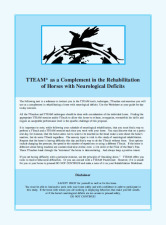
Rehabilitation of Horses - Booklet
Useful techniques to help your horse recover from neurological deficits including EPM.
Shop > Horses > Equipment
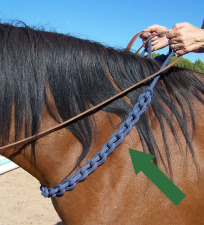
Balance Rein - Braided
Used for horses who are above the bit, behind the vertical or strung-out.
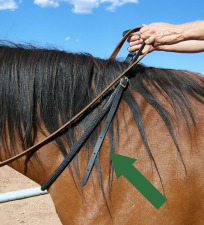
Balance Rein - Woven
Good for horses who are above the bit, behind the vertical or strung-out. New lower price!
Worldwide > Animal Ambassadors International
1988 TTEAM Gives Children Opportunities
Further Thoughts and Observations about the Opportunities that TTEAM Offers to School Children
TTEAM News International April, 1988 Vol 8 No 2 Pp. 1-6
When I began offering Animal Ambassadors International® educational programs in the schools, I had no idea what to expect. I knew that TTEAM was great for animals. Robyn's files burst with case histories of horses and other animals from all over the world that have been helped through TTEAM & TTouch. I also knew that many of these case histories had been submitted by people who had relatively little experience with TTEAM before they were called upon to use their skills on behalf of some animal in trouble. But these people were mature adults; often they were professionals in some field involving animals. The subtleties of TTEAM would not escape them.
It was different with children. I was confident that hands-on experience with live animals would provide motivation and self-esteem, and I hoped it would be a bridge to right-brain learning. But I was totally unprepared for what was to happen.
"Andy would carry the cat around upside down by the tail. I didn't like it, but I didn't know what to do about it. Then this week I noticed a big change in his attitude. He's more considerate. I'm very pleased."
This comment from Andy's father at an elementary school "Parents Night," after I had been doing a TTEAM-Animal Ambassadors International® educational program that had already run four days of a week-long unit, was one of the first hints I had that TTEAM for children is a two-way street. The benefits flow both ways. The feeling for animals that can come with actually doing the TTouch on a live animal opens up doors for some children. They begin to think in a new way that is more responsive and more caring. Many children have this natural ability within themselves, and it is wonderful to see it awakened in a child.
The key is that it happens without fuss, without preaching. The child just has a new awareness, an added element that changes the way in which he perceives the world. In some children, that is going to make a difference, as it did for Andy.
The first educational programs that I was invited to do were with children in Special Educations. As I understand it, these are children who are considered educable, but they do not learn up to their potential. Emotional and/or physical problems may be holding them back. They may be hyperactive and disruptive. Some are gifted, artistic and imaginative, but unresponsive to the left-brain learning approach favored in most schools. Some Special Ed children score high in I.Q. tests and some don't; but they are all lumped together bottom percentile and an enormous amount of effort is expended in trying to solve their problems.
If I'd had a choice, I probably would have chosen to work with mainstream classrooms or children in the Gifted and Talented programs in preference to Special Ed. However, as it turned out, that probably would have been a mistake. Each child in Special Ed is there because he or she has some kind of a problem - a problem that is considered solvable or the child wouldn't be there. So, working with 40 kids, you are going to have at least 40 problems to deal with, each one different. What an incredible laboratory for TTEAM.
Following are some examples. They are not pretentious enough to be called "Case histories" because teachers do not readily disclose a child's background unless something happens, and then they tell you as little as possible, i.e.. "He's hyperactive. He probably didn't get his pill today." The names have been changed in these examples, and anything else that might identify a particular child, as in Andy's case above. But everything else is real.
I would like to begin with an experiment in poetry writing that we did in one class. This came the day after we did an Introduction to TTEAM (with stuffed toy animals) and an imaginative journey throughout animal habitats looking for a special animal that each child could choose to befriend and protect.
Animals are now used as part of the treatment protocol in a growing number of programs, according to Carolyn Reuben, health editor of the "L.A. Weekly." She cites animals as therapy for abused children, delinquents, women in prison and the elderly. For example, animals helped abused children to relax and talk about their fears.
The last thing we were thinking about in our poetry writing class was therapy. I had read a program Mann Lowenfels does to teach creativity to gifted children and thought it would adapt well to our animal program. Simplified from Lowenfels' program, its objective was to enhance creative writing skills by giving children a simple. formula to produce a poem.
We began this lesson by asking the children if any of them had tried the TTEAM circles they had learned yesterday on their pets at home. Most of them had, and a lively discussion ensued as the children reported different reactions of their pets to the circles. The teacher then used this springboard to introduce the concept of "Feelings". She wrote several different feelings on the chalkboard: happiness, sadness, etc. Then we thought of colors, places and actions that were happy, sad, etc. You put them all together with your chosen animal and you had a poem.
And what poems did we get -- from these children who don't usually give?
Afraid is
an orange cat
In a pumpkin patch
Alone.
This is from a child who was, right then, the subject of a bitter custody fight "with many tears." Within a couple days her mother, with whom the child wanted to be, would lose the battle.
Another child from a troubled home wrote:
Mad is
a brown gorilla
Who is furious
On a volcano top.
A third child who was feared in his neighborhood because he carried a tremendous chip on his shoulder. Yet this child comes from a wonderfully supportive family. He wrote:
Happiness is
A gray wolf
In a den
With her puppies.
I think it might have been an eye-opener to some of the teachers that this child could write such a "peaceful" poem. He was showing a new side of his character, but he as also telling that his home life is okay.
Obviously the kids were projecting their own feelings into the animals that they wrote about. It was a safe way to tell us something about themselves. That may be very important for this group.
I believe now that a TTEAM & TTouch lesson, followed by a lesson in creative writing, may help children express themselves. If something is bothering them. They may choose to express their loneliness or rage in a poem. Children who bristle at the idea of writing a poem are sometimes more willing to do so if the poem is on behalf of their chosen animal. Of course, they can also write stories for their animal, as they do after Alexandra Kurland's presentations. It is possible that the animals, imagery and art all tap the right-brain mode, making for a learning approach that can release stress as well as enhance creativity.
"Animals can be some of our best teachers," Alexandra Kurland tells her audience of school children. "Every time I do a live-animal program, I find a new reason to agree with the truth of this statement. The Tellington TTouch circles that the children do open the door."
For example, a horse must be a huge animal from the point of view of a child who may never have touched a horse before. My mare, Starlite, is actually on the small side, less than 15 hands. She is 26 years old, which means that she does not move around very much. She is very pretty, with dark glowing eyes set wide apart, and a white snip and star on her kindly face. Furthermore, she just loves having TTEAM done on her. At home she has been known to "wait in line" for her turn while I'm working on another horse.
When I take her to a school, I load a portable corral on one side of my stock trailer. Starlite goes into the other aide and Lad, a dog rides in the back of the pickup. The corral is to keep the children out rather than the horse in. Some children are fearless and eager to make contact with the horse. The corral helps teachers keep them in line by setting a boundary. It also frees Starlite's head while I am working.
The children enter the corral one at a time to work on the horse. I demonstrate a particular touch, such as Raccoon circles on the ears, first getting the horse to lower her head. Then a child is invited to come into the corral and do the same thing. Most of the children love it. Their eyes are shining and they try so hard to do the TTouch exactly right. I am usually at Starlite's neck, with my arm under her neck, and I can feel her response to the children's TTouch. It is fascinating, because she seems to feel some children's hands much more than others. She will lower her head into my arm in utmost bliss. None of the children has ever frightened her or made her unhappy. It is just that some seem to reach her more.
I think a horse is the most wonderful animal teacher. Maybe it's the size that commands respect. Perhaps it in because TTEAM was originally developed for horses. The good thing is that even if a child is a little bit afraid, using the TTEAM & TTouch the child has something definite to do rather than just pet the horse and thereby, a different type of learning situation is set up. Usually the fear soon vanishes and the child is elated, with a real sense of accomplishment. Starlite feels that she knows she has given the child that good feeling. Merely petting the horse would not get the same results.
Of course, I give the bolder children a little more challenging circles than I do the shy ones. And herein lies a tale.
Bobbie was good looking, disruptive and proud. He began my day making obscene circles on his stuffed toy animal; his next move was to beat on the kids next to him. He flatly refused to do anything I asked of him and spent his time trying to make the other kids laugh -- at my expense if he could. I felt that this was not hatred but a challenge. There is a difference. I learned that Bobbie was usually taught one-on-one (that is, by himself with no other children present) and that it was only on the occasion of my visit that it was thought he might join the others. I wanted to say, "thanks a lot."
Usually with a week-long program I try to bring the horse on the first or second day. But a snowstorm delayed the live animal presentation until Thursday. By Wednesday, Bobbie was intolerable. I went to bed that night having visions of him jumping on Starlite's back, hurtling the corral and riding off into the sunset.
Actually, the next day he was pretty good. He hung on the corral with the other kids (they were allowed to stand on the first rail), raising his hand and shouting "Me" whenever someone was chosen to enter the corral. I had not worked the inside of a horse's mouth in demonstrations before, partly because Starlite doesn't like it that much, but today I did. I played the piano on her tongue. I could bear the deafening silence behind me, no "Me! Me! Me!" for this one. I did hear Bobbie say, "I'm not gonna do that!" I drew the suspense out as long as I dared and then called, "Bobbie!"
To his credit, he walked into the corral without a word. I let him suffer a moment longer and then asked him if he would like to do "Tarantula Pulling A Plow" on Starlite's back. He never said a word, and I have never seen a more focused kid. And boy, did that tarantula pull that plow! Starlite's neck sank happily into the crook of my arm.
The next day the teacher's aide who had been working with Bobbie popped out of the room, eyes wide. "He sat still for an hour! He even did his work!
Of course this was just one day in the life of this child. And we don't know quite why he was affected in this way. For some thing permanent to happen, a much more imaginative, ongoing program would have to be tried. Actually, Marie Luise van der Sode has done a six-month residential program in Europe at a Youth Farm for troubled teenage girls. She reported that some of the girls who were unpopular on account of being aggressive became easier to get along with (and more popular) after learning TTEAM. The work with the animals had taught them an alternative way of being.
Very few children have been too frightened to touch the horse and the dog. Of more than 200 children, I think only four or perhaps five hung back. One boy, Cody (the only boy who showed apprehension), conquered his fear and did very nice circles on both Starlite and Lad.
At the end of the week, the children spoke of their chosen animals in front of their classmates and other classes, and were awarded with Animal Ambassador certificates. Cody decided he couldn't do this. Cody was part of a group of mixed Special Ed and Gifted-and-Talented. The purpose of putting these two groups together was to raise the prestige and self-esteem of the slower group, to make it easier for them to leave their classrooms each day for Special Ed. Another purpose was to teach the advanced kids to share and care.
Cody agreed to let one of the advanced children read his speech for him while he stood next to the other child, holding a picture of his animal. So the advanced child practiced two speeches. Just as everyone got up to leave the room, Cody said, "I think I can do my own."
The teacher asked, "What do the rest of you kids think? Do you think Cody can do it?"
One of the advanced children started a cheer, and every child in the room took it up: "Go, Cody, Go!
Cody did give his speech, and he didn't do it too badly. As we left the other classroom, I told him, "You were brave."
He grinned one of those tooth-gaped eight-year-old grins. "Yeah, but I liked it a whole lot better being brave with the horse."
These speeches that the kids gave when they received their AAI Certificates were an exciting part of the program. One parent made the trip down to the school twice for her son's five-minute program. It was great that she was a devoted mother to do that for her son, and it also gives an indication of how much this program meant to the children. Non-readers started asking for more animal books to read. One gifted boy elected to memorize his speech, when he could have read it. Then others wanted to memorize. Another child (in Special Ed) elected to redo her project the week after I left. So there were just lots of indications that we were motivating these children.
I've found that dogs have different reasons to teach than horses. For example, Lad, Starlite's ambassador, treats each child as an individual. He'll offer a paw to one, try to lick another's face (just one lick per child), touch another's hand with his nose (one touch). Eddie, a smart, aggressive boy, was determined to make Lad shake hands with him. Before I could stop him he reached out and pumped Lad's paw. Immediately the magic left. Lad didn't exactly turn into a pumpkin, but he lost confidence for a little bit. It was a wonderful opportunity to learn myself and to explain to the children that one big part of communicating with animals is to watch and listen for the signals they give you. Of course this can be a step toward learning how to communicate more sensitively with people.
Incidentally, when I began these programs, I felt that learning care and consideration for animals could be a step toward learning care and consideration for other people. A psychologist pointed out that such was not always the case. Some people who relate well to animals do not always relate well to human beings. The animal in this type of situation are a social crutch.
Frank was a child like that. He had a brilliant mind, four pets at home, and he knew more about some kinds of wild animals than I did. He did a super job with the horse. He was wonderful with Lad. But his teacher said that be was verbally abusive to other children, with sexual connotations.
We tried to provide Frank with an alternative way of being by encouraging him to share his tremendous fund of knowledge of animals in the classroom. Understandably, the other children weren't really crazy about Frank, but by the end of the week he was providing other children with information about the animals they had chosen, and starting some interesting discussions. So in this way the animals he loves could be a bridge rather than a crutch.
When you do TTEAM it is like dropping a pebble in a pond. There is a saying that the ripples will eventually be felt on the farthest star. Lad was a dog I borrowed from a mountain man who was not known for his kindness to dogs. Since I have been using Lad for TTEAM work this man's natural kindness has surfaced. He just had never seen dogs as feeling, hurting beings before. They were curs to be yelled at and cowed into submissive obedience. Now he talks to them.
TTEAM is fascinating because you don't know what the results will be or how far they will carry. Its therapeutic value would be somewhat different that the proven stress-reduction that comes from petting an animal. My personal feeling is that TTEAM provides an ideal whole-brain learning situation. You have much more active, focused communication than when patting an animal because you are asking a great deal more of the animal. The animal is more focused because it doesn't know exactly what will come next. Some horses in particular become quite fascinated. They are so involved and politely interested in what you are doing sometimes it is almost comical.
But while you and the animal are focused, you are also very much aware of your surroundings. You have to be aware when working with a horse. An element of personal safety in involved and a sense of where you are in space is a necessity. Thoughts and movements become more precise and clear with experience.
Experiments have suggested that babies learn beat when they are relaxed, happy and alert. I see no reason to believe that animals don't learn the same way, and human beings of whatever age. TTEAM helps to promote this state where learning can happen.
New Program
This spring I am offering a follow-up program directed toward the intentional aspect of Animal Ambassadors International®. This program takes 1-2 hours. Children are introduced to the culture of a foreign country. They write letters about themselves and their pets, or stories about a favorite any species, to be shared with children in the other country.
Regards, Ann Finley
NOTE: TTEAM is an acronym of "Tellington TTouch Equine Awareness Method." Since this article was written, Linda decided to use a brand name for all the facets of the TTouch organization. Currently, that is Tellington TTouch® Training.
1988 Animal Ambassadors International - Pilot Program in Idaho Schools
I've just been through a remarkable experience. It actually began last fall, when I did a pilot program introducing Animal Ambassadors International® and TTEAM to elementary school children in my home state of Idaho. The TTEAM portion of the program was exciting and well received. We could see a wonderful thing happening: children becoming more responsive, more caring. We did not so much teach the children as awaken something they already had within themselves, something that can be very beautiful in a child. I say "we" because it was the animals who were the teachers. The TTouch was the connection that made it possible, but I was as surprised as anyone at some of the "lessons" the animals taught us.
We also demonstrated how an Animal Ambassadors International unit can be used to teach natural history and science. Each child chose an animal to befriend, protect, and learn more about. Many of the children also wrote a poem on behalf of their animal.
The content was rich, the program was successful and yet something was missing: the cross-cultural element Animal Ambassadors International began as an international celebration of the importance or animals in our lives. Linda Tellington-Jones invited American children to send pictures of their pet to her to take to Russia. Many children responded. The pictures were displayed in Gorky Park and the Russians were deeply touched by this expression of friendship.
I tried to introduce an international awareness into my school program, but it just didn't have the energy of the other elements of the program. In trying to analyze it and discover what was blocking the flow I realized pretty quickly that it was myself. I could not project interest in what I knew so little about. I could not make it real for them.
Fortunately a chance came to remedy the situation a little bit. On January 5, Linda organized an Animal Ambassador day for 15 Russian children who made a whirlwind tour of the US with Youth Ambassadors. Out of this experience grew the past two days and some exciting suggestions from teachers that I can hardly wait to pass on. But first let me describe what we did and what happened.
Most of the children had had at least a brief introduction to TTEAM last fall. A few had earned Animal Ambassadors International certificates. So it was a heartwarming reception I got from these children when I returned. The age range was 7 through 13, with most being 8 or 9. They were quite a bit younger than the Youth Ambassadors. But I was to find out they still responded to the Youth Ambassadors as one child to another.
I began by telling them about the Russian Youth Ambassadors in San Francisco. I told them everyday things, for example some of the comments the Russians had made about our food in the Youth Ambassador newspaper, "The Bridge." We looked at a globe to see what an immense country Russia is, and I talked about how the Soviet Union is actually many countries in one. We traced on the globe to find a Russian city exactly opposite us, only to find a city with a name we couldn't pronounce. After a few minutes' discussion I put on a record of Russian music -- explaining"balalaika" as best I could -- and then I taught the kids the dance the Russians had done the night of the concert at the Dakin home in San Francisco.
Fun? The teachers couldn't stand it. Soon teachers and aides -- everybody -- was whirling around. Nobody wanted to stop. The kids could do the difficult steps so easily it was amazing. We all had a grand time. This happened in class after class. In one class it was super because after we stopped the dancing one child said, "I wish we could write to some Russians." What a lead-in. We left the Russian musician and they wrote their letters.
The next day was thrilling because the kids had been doing some thinking on their own. They wanted to know about the Russian alphabet, why we spell their country U.S.S.R. and they write it C.C.C.P. One boy wanted to write his letter not about animals at all but about stopping nuclear warfare. I told him to give it a try if he wished, but he decided on his own that maybe his first letter should be about animals because he really had a super animal story to tell. Last fall he had adopted wolves as his totem animal and this winter he had had a chance to help a wolf. He would save nuclear disarmament for another letter.
It's important to remember that some of these letters are from kids who have never written a letter before. Many of these kids are what they used to call "under-achievers." They don't try. Well, today they tried. They tried so hard. I think they did a beautiful job. I hope it comes across how genuine and honest these letters are. The kids were not being creative, they were just being. They put their hearts into these letters and they did it in their own way, trying to be neat and readable, trying to spell the words correctly to make it easier for the Russian child who would read it. I'm not sure the Russians will understand what kind of dog a "cocker spaniel" is, but otherwise...
I wish I could put into words how important I feel this program is. These kids are not the privileged, some come to school in rags. They may never have another chance to make this connection. Yet in 10 years most of them will be voters. Will they still care about wolves and nuclear disarmament, and will they still be capable of signing "Your best friend" in a letter to an unknown Russian?
NOTE: TTEAM is an acronym of "Tellington TTouch Equine Awareness Method." Since this article was written, Linda decided to use a brand name for all the facets of the TTouch organization. Currently, that is Tellington TTouch® Training.
